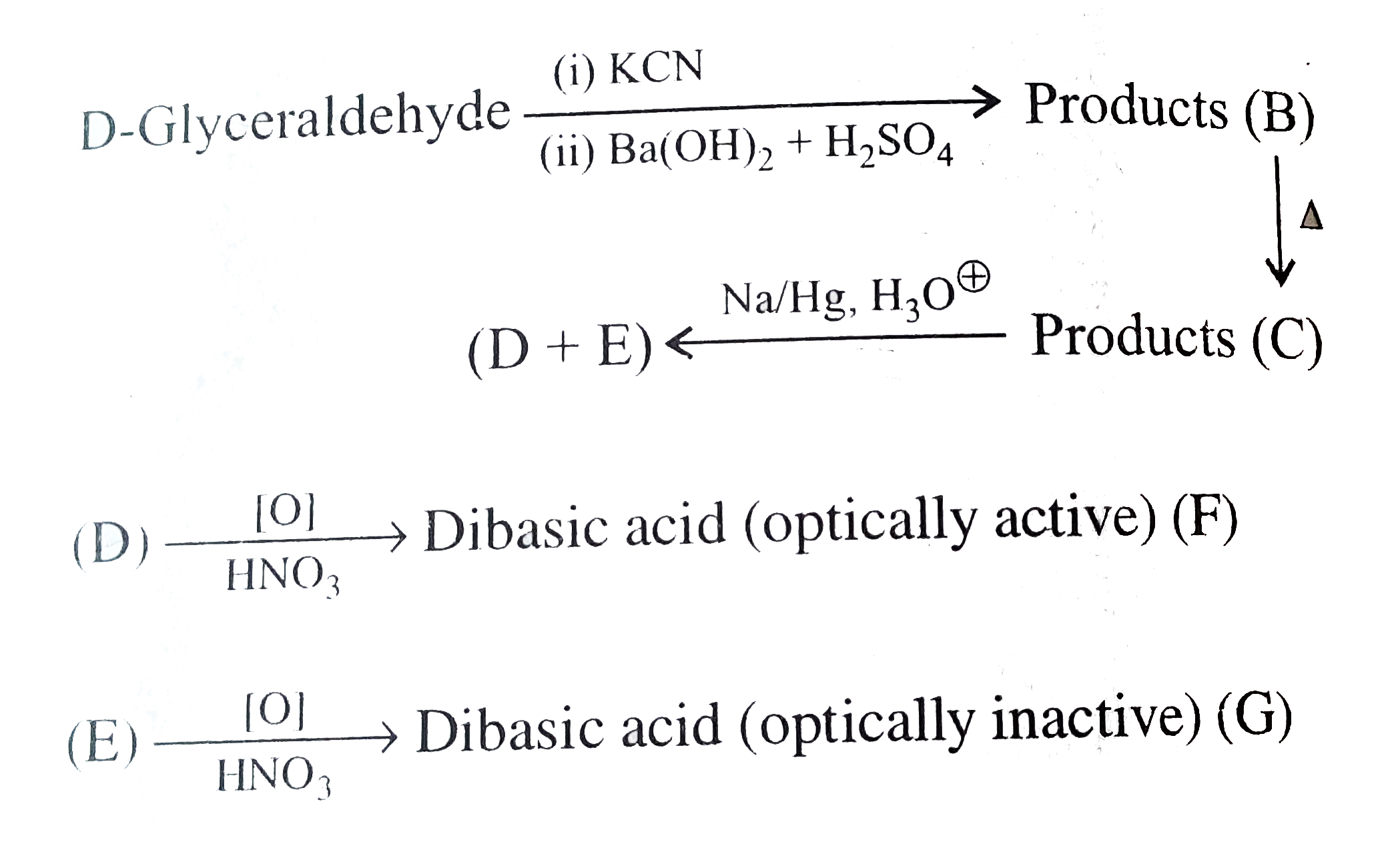Number of isomeric products obtained when 2-chlorobutane is heated with alcohol KOH is
One
Two
Three
Four
To determine the number of isomeric products obtained when 2-chlorobutane is heated with alcoholic KOH, we can follow these steps:
Step 1: Identify the Structure of 2-Chlorobutane
2-Chlorobutane has the following structure:
- CH3-CH(Cl)-CH2-CH3
Step 2: Understand the Reaction Conditions
When 2-chlorobutane is heated with alcoholic KOH, it undergoes an elimination reaction (dehydrohalogenation), leading to the formation of alkenes.
Step 3: Identify Possible Alkenes
The elimination of HCl from 2-chlorobutane can lead to the formation of two primary alkenes:
1. 1-butene (CH2=CH-CH2-CH3)
2. 2-butene (CH3-CH=CH-CH3)
Step 4: Determine the Isomers of 2-butene
2-butene can exist in two geometric isomers due to the presence of a double bond:
1. Cis-2-butene: Both methyl groups (CH3) are on the same side of the double bond.
2. Trans-2-butene: The methyl groups are on opposite sides of the double bond.
Step 5: Count the Total Isomers
Now, we can summarize the isomers:
- From 1-butene: 1 isomer (1-butene)
- From 2-butene: 2 isomers (cis-2-butene and trans-2-butene)
Thus, the total number of isomeric products is:
1 (from 1-butene) + 2 (from 2-butene) = 3 isomers.
Final Answer
The number of isomeric products obtained when 2-chlorobutane is heated with alcoholic KOH is 3.
---
2-Chlorobutane has the following structure:
- CH3-CH(Cl)-CH2-CH3
When 2-chlorobutane is heated with alcoholic KOH, it undergoes an elimination reaction (dehydrohalogenation), leading to the formation of alkenes.
The elimination of HCl from 2-chlorobutane can lead to the formation of two primary alkenes:
1. 1-butene (CH2=CH-CH2-CH3)
2. 2-butene (CH3-CH=CH-CH3)
2-butene can exist in two geometric isomers due to the presence of a double bond:
1. Cis-2-butene: Both methyl groups (CH3) are on the same side of the double bond.
2. Trans-2-butene: The methyl groups are on opposite sides of the double bond.
Now, we can summarize the isomers:
- From 1-butene: 1 isomer (1-butene)
- From 2-butene: 2 isomers (cis-2-butene and trans-2-butene)
1 (from 1-butene) + 2 (from 2-butene) = 3 isomers.
The number of isomeric products obtained when 2-chlorobutane is heated with alcoholic KOH is 3.
Topper's Solved these Questions
Similar Questions
What is the major product obtained when 2-bromobutane is heated with alcoholic KOH? Write only the major product expected to be obtained.
View Solutionn-butane on monobromination gives three isomers. The number of product(s) obtained when the major product is heated with KOH in CH3CH2OH is/are _____
View Solution
Knowledge Check
1-chlorobutane reacts with alcoholic KOH to from
A1-buteneB2-buteneC1-butanolD2-butanolMajor product obtained when 2-chloro-3-methyl butane is treated with ethanolic KOH is likely to give
ANeopentyl lcoholBPenteneC2-Methyl-2-buteneDNo reactionWhat is the final product obtained when chlorine reacts with ethyl alcohol in KOH ?
ACHCl3BCCl3CHOCCH3ClDnone
n-butane on monobromination gives three isomers.The numver of product(s) obtained when the major product is heated with KOH in CH3CH2OH is/are…............
View SolutionWhich is the main product obtained when the following haloalkanes are treated with alcoholic KOH?
(i). CH3CH2CHICH3
(ii). CH3CH2C(CH3)2Br
View SolutionA mixture of 1-chlorobutane and 2-chlorobutane when treated with alcoholic KOH gives:
View Solution
Two isomeric products are obtained in (C) they are:
View SolutionThe product(s) obtained when t-butyl bromide is treated with alcoholic ammonia is ________.
View Solution
